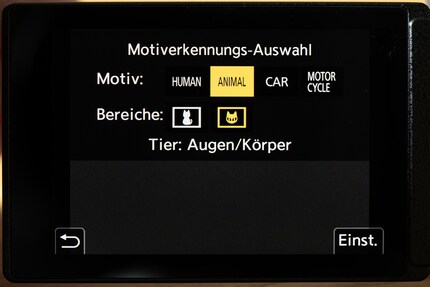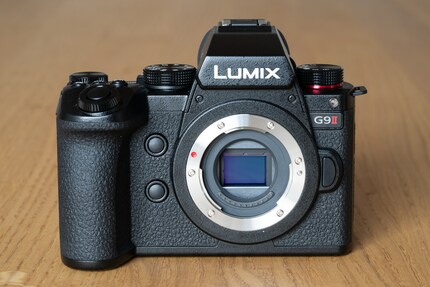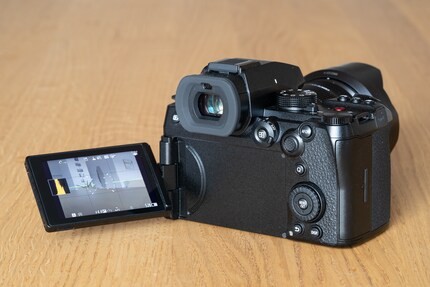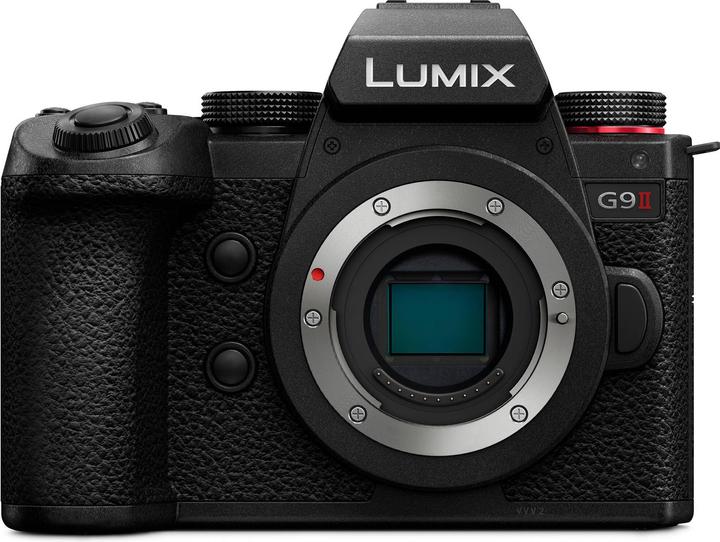
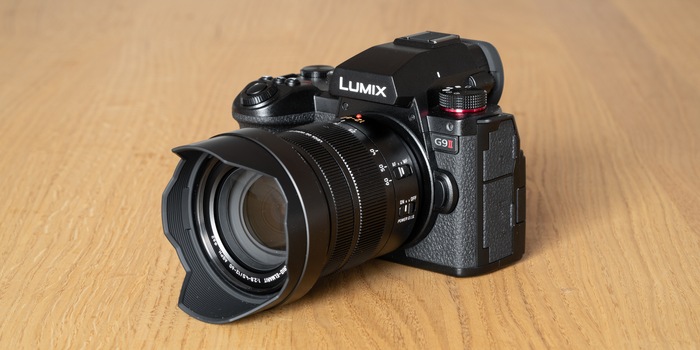
Panasonic presents Lumix DC-G9II and two lenses
The new Panasonic Lumix DC-G9II with MFT sensor inherits the body and many of the functions of the Lumix DC-S5II - but with its smaller sensor is better suited to things like wildlife photography.
A latest-generation micro four-thirds sensor (MFT), a hybrid autofocus system and a high continuous shooting speed: the new Panasonic Lumix DC-G9II is primarily aimed at animal and action photographers. However, with its extensive video functions, the camera should also appeal to film-makers and vloggers. The recommended retail price in Switzerland is 1899 francs and the camera will be available at the beginning of November 2023.
Surprisingly, the Lumix G9II takes its design and operation directly from the Lumix S5II. The body has exactly the same dimensions and the same button layout. Only the weight is slightly lower. Here is an overview of the most important specifications:
Hybrid autofocus from the Lumix DC-S5II
The biggest improvement over the five-year-old predecessor model is the autofocus: in the past, Panasonic relied on the contrast-based "Depth-From-Defocus" system, which could never really keep up with other autofocus systems. It was only in the Lumix DC-S5II that the manufacturer introduced a hybrid system with phase detect for the first time - with success.
Panasonic is now also using such a hybrid system in the DC-G9II. The camera is also equipped with the latest tracking options. In addition to people, it also recognises animal eyes, cars and motorbikes. In a short hands-on test, the autofocus made a decisive and fast impression. Only a detailed test will show how reliably it recognises and tracks subjects.
Revised sensor from the Lumix DC-GH6
Panasonic uses the sensor from the Lumix DC-GH6. This makes sense, as it is only a good year old and offers a resolution of 25 megapixels. A good value for the small MFT format. Test reports attest to the very good video quality of the sensor in the DC-GH6. The image quality for photos is also good, but the dynamic range lags behind the competition with similarly small sensors. However, since Panasonic has revised the sensor in the Lumix DC-G9II, this could have improved.
Panasonic refers to the DC-G9II as a "Dynamic Range Boost". What exactly this means cannot yet be quantified without scientific tests.
Better stabilisation, many video functions
Compared to its predecessor, the Lumix DC-G9II offers a better image stabiliser. It now compensates for up to 8 f-stops instead of the previous 6.5. The continuous shooting speed with electronic shutter and continuous autofocus is 60 frames per second (FPS) instead of the previous 20. Mechanically, it is 10 FPS. The pre-burst function is now available in three stages: 0.5, 1 or 1.5 seconds.
The display, like the rest of the body, comes from the DC-S5II and, with 1.84 million pixels, is as sharp as ever. The resolution of the viewfinder remains the same - 3.68 million pixels. This is above average in this class.
Panasonic also holds nothing back in the video area. The Lumix DC-G9II manages 4K with 120 FPS in 10 bit 4:2:0. Up to 60 FPS it is 10 bit 4:2:2, all without cropping. The selection of formats is huge, you can also record "Open Gate 5.8K", i.e. have the entire sensor read out in 4:3 format.
New lenses
At the same time as the Lumix DC-G9II, Panasonic has introduced two new MFT lenses: a revised version of the Leica 100-400 mm f/4.0-6.3 and the Leica 35-100 mm f/2.8. The focal lengths correspond to 200-800 mm and 70-200 mm in 35 mm format. Despite this range, the lenses are comparatively compact - the great advantage of the MFT system with a small sensor.
My fingerprint often changes so drastically that my MacBook doesn't recognise it anymore. The reason? If I'm not clinging to a monitor or camera, I'm probably clinging to a rockface by the tips of my fingers.
From the latest iPhone to the return of 80s fashion. The editorial team will help you make sense of it all.
Show all
